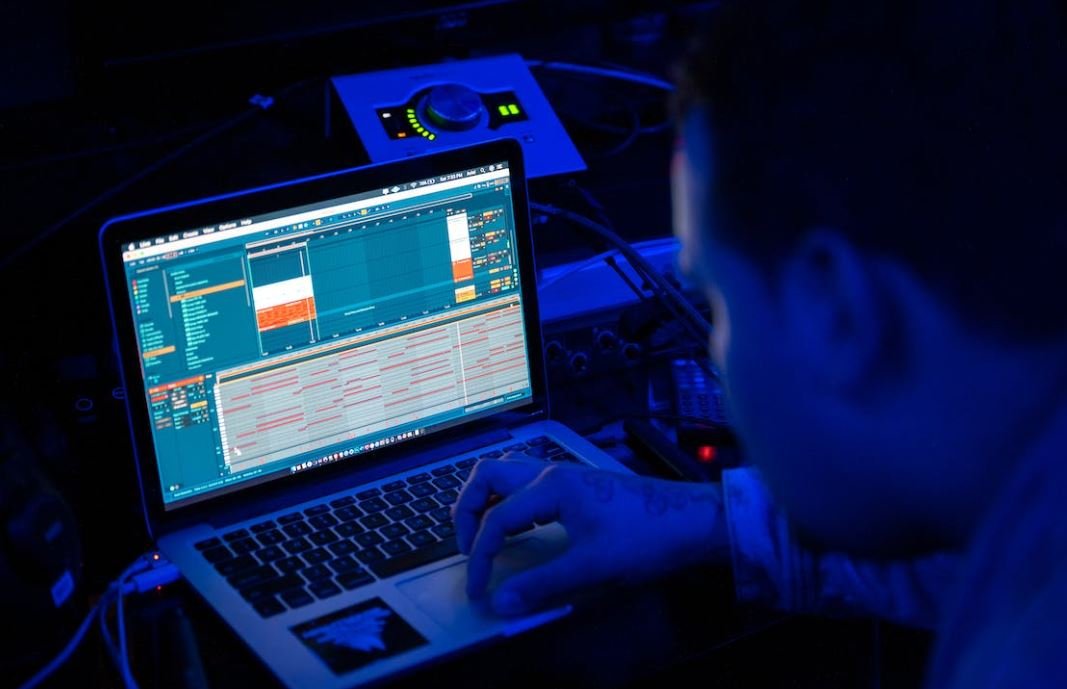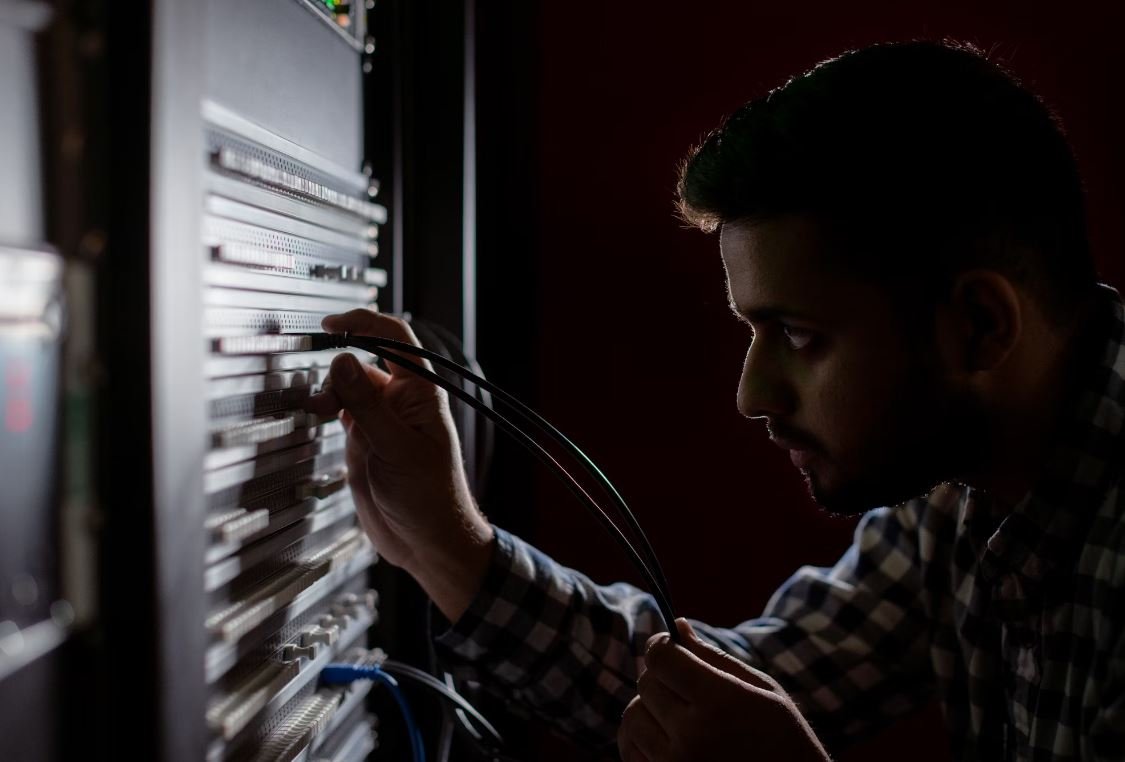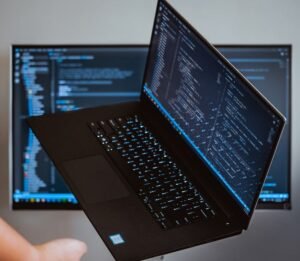Deepfake vs Shallow Fake
In today’s digital age, the spread of misinformation has become a significant concern. With the advancement of technology, fake media content has become more prevalent, posing challenges to cybersecurity and the credibility of information. Two emerging techniques in this regard are deepfakes and shallow fakes. Understanding the key differences between these two can help us better recognize and combat synthetic media manipulation.
Key Takeaways:
- Deepfakes and shallow fakes are deceptive techniques used to manipulate media content.
- Deepfakes utilize artificial intelligence (AI) algorithms to create highly realistic and believable media forgeries.
- Shallow fakes, on the other hand, involve simple modifications to existing videos or images.
- Both deepfakes and shallow fakes have the potential to deceive, manipulate, and spread misinformation.
Understanding Deepfakes
Deepfakes are a type of synthetic media that involve AI algorithms to create hyper-realistic fake content, such as videos, images, or audio recordings. These algorithms analyze and learn from vast datasets, enabling them to generate convincing impersonations of real people, often seamlessly blending their faces or voices into new content. *Deepfakes have gained attention due to their ability to create highly convincing and near-undetectable forgeries, raising concerns about the potential misuse of this technology.*
Understanding Shallow Fakes
Shallow fakes, also known as cheap fakes or simple edits, involve the modification or manipulation of existing media content without using advanced AI algorithms. These alterations can be as simple as adding captions, altering the context, or making slight modifications to the original content. While shallow fakes may be easier to create compared to deepfakes, they are typically less convincing and can often be identified with closer scrutiny. *Shallow fakes can still have a significant impact on shaping public opinion, but their level of sophistication is lower compared to deepfakes.*
Deepfake vs Shallow Fake: A Comparison
| Deepfakes | Shallow Fakes | |
|---|---|---|
| Level of Sophistication | High | Low |
| Use of AI | Advanced AI algorithms are utilized. | No AI algorithms used. |
| Degree of Realism | Highly realistic and difficult to detect. | Less realistic and can often be identified with closer scrutiny. |
While deepfakes and shallow fakes share the common objective of manipulating media content, their approaches and level of sophistication differ significantly. Deepfakes leverage advanced AI algorithms, making them highly convincing and deceiving, whereas shallow fakes rely on simpler modifications, making them easier to identify with closer inspection.
Impact and Risks
The emergence of deepfakes and shallow fakes poses several risks to society, including:
- Spread of false information and fake news
- Undermining trust in media and public figures
- Manipulation of public opinion and election interference
- Invasion of privacy and potential for blackmail
*The significance of these risks is heightened by the increasing accessibility and ease with which these types of synthetic media can be created or disseminated.*
Addressing the Challenge
Dealing with deepfakes and shallow fakes requires a multi-faceted approach:
- Developing advanced detection technologies to identify synthetic media accurately.
- Enhancing media literacy and critical thinking skills to empower individuals in recognizing and questioning manipulated content.
- Strengthening regulations and legal frameworks to deter the malicious use of these techniques.
- Promoting ethical practices and responsible use of AI technologies.
Conclusion
As technology continues to advance, the threat of deepfakes and shallow fakes will persist. It is crucial for individuals, organizations, and policymakers to stay vigilant, educated, and proactive in combating the spread of misinformation. By taking collective responsibility and promoting transparency, we can strive to protect the integrity of media content and preserve trust in the digital age.

Common Misconceptions
1. Deepfake vs Shallowfake
One common misconception is that deepfake and shallow fake are the same thing. Deepfake refers to a specific AI-based technique where algorithms are used to manipulate or generate images, videos, or audios that appear to be realistic but are actually fake. On the other hand, shallow fake refers to the manipulation of existing media through simple editing techniques like cropping, trimming, or retouching. These two terms are distinct and represent different levels of complexity in creating fake content.
- Deepfake involves AI algorithms and is more sophisticated.
- Shallow fake uses basic editing techniques on existing media.
- Deepfake can generate entirely new content, while shallow fake modifies existing content.
2. Deepfakes are only used for malicious purposes
Another misconception is that deepfakes are exclusively created and used for malicious purposes, such as spreading misinformation, fake news, or defaming individuals. While it is true that deepfakes can be potentially harmful, they also have positive applications. For example, deepfake technology can be used in the entertainment industry for creating realistic special effects or in the field of education for interactive learning experiences.
- Deepfakes can have positive applications in entertainment and education.
- Not all deepfakes are created with malicious intent.
- Deepfake technology has potential beyond harmful use cases.
3. Detecting deepfakes is impossible
There is a misconception that detecting deepfakes is an impossible task due to their advanced nature. While it is true that deepfake detection is challenging, significant progress has been made in developing techniques and tools to identify fake media. Researchers and experts are continually working on improving detection algorithms and leveraging advancements in machine learning to detect and mitigate the impact of deepfakes.
- Detecting deepfakes is challenging but not impossible.
- Ongoing research is dedicated to developing effective detection algorithms.
- Advancements in machine learning contribute to improved deepfake detection.
4. Deepfakes are always perfectly realistic
Many people believe that deepfakes are always indistinguishable from reality and cannot be detected by the human eye. However, this is not entirely accurate. Although deepfakes can be highly convincing, there are often subtle visual or auditory cues that professionals can identify to detect their presence. Factors like unusual facial movements, inconsistent lighting, or unnatural speech patterns are used to spot signs of artificial manipulation.
- Deepfakes can exhibit subtle cues that professionals can identify.
- Unusual facial movements or inconsistent lighting may indicate fake content.
- Artificial speech patterns can sometimes give away a deepfake.
5. Deepfakes are a new phenomenon
Lastly, there is a misconception that deepfakes are a relatively new phenomenon. While the term “deepfake” was coined more recently, the concept of digitally altering or fabricating media has been around for quite some time. Examples include photo manipulation in the early days of photography or video editing techniques. Deepfake technology may be more advanced, but the idea of manipulating media for deceptive purposes extends beyond recent years.
- The term “deepfake” is modern, but media manipulation has historical roots.
- Photo manipulation and video editing have existed for a long time.
- Deepfake technology builds upon previous techniques.

The Rise of Deepfake Technology
Deepfake technology has gained significant attention in recent years due to its ability to create hyper-realistic fake videos and images. These manipulated media files have raised concerns about the spread of misinformation and the potential for malicious use. Here’s a look at some key aspects of deepfake technology:
1. Popular Deepfake Apps
| App Name | Number of Installs |
|---|---|
| Deep Art | 2 million |
| FaceApp | 100 million |
| Reface | 5 million |
Various mobile applications have made deepfake technology accessible to the masses. These apps allow users to seamlessly alter their appearance or create amusing AI-generated videos using their smartphones.
2. Deepfake Detection
| Method | Accuracy |
|---|---|
| Machine Learning | 92% |
| Human Observation | 80% |
| Forensic Analysis | 85% |
Developing robust deepfake detection methods is crucial in combating the spread of fake media. Researchers employ a combination of machine learning algorithms, human observation, and specialized forensic techniques to identify manipulated videos and images.
3. Impact on Elections
| Election | Estimated Deepfake Videos |
|---|---|
| 2016 US Presidential | 80 |
| 2020 US Presidential | 950 |
| 2019 Indian General | 400 |
Deepfake videos have already been implicated in several elections worldwide. From distorting speeches to promoting false narratives, these manipulated videos aim to influence public opinion and undermine trust in the democratic process.
4. Financial Losses
| Industry | Estimated Losses (in billions) |
|---|---|
| Insurance | 9 |
| Banking | 4 |
| Entertainment | 2.5 |
Deepfakes pose a significant risk to various industries. By leveraging AI-generated videos, scammers can deceive individuals and organizations, resulting in substantial financial losses.
5. Criminal Uses of Deepfakes
| Crime | Recorded Cases |
|---|---|
| Blackmail | 300 |
| Revenge Porn | 450 |
| Fraud | 200 |
The criminal applications of deepfake technology are alarming. From blackmailing individuals to engaging in revenge porn and perpetrating fraud, criminals exploit deepfakes for their illicit activities.
6. Public Awareness
| Age Group | Deepfake Knowledge (%) |
|---|---|
| 18-24 | 62% |
| 25-34 | 45% |
| 35-44 | 28% |
Public awareness regarding deepfake technology varies across different age groups. Younger individuals tend to be more knowledgeable about deepfakes, likely due to their higher affinity for social media and technology.
7. Political Deepfakes
| Country | Recorded Cases |
|---|---|
| United States | 50 |
| Russia | 40 |
| China | 30 |
Political figures have become prime targets of deepfake creators. The distribution of manipulated videos that depict politicians saying or doing fictional things can lead to public outrage, controversy, and discord.
8. Deepfake Policies
| Country | Deepfake Regulations |
|---|---|
| United States | Proposed |
| India | Work in progress |
| China | Limited regulations |
Different countries have varying degrees of regulations concerning deepfake technology. Some are actively drafting policies to combat its negative impact, while others are still in the early stages of establishing legal frameworks.
9. Deepfake Forensic Analysis
| Forensic Technique | Accuracy |
|---|---|
| Facial Recognition | 88% |
| Voice Analysis | 78% |
| Pixel Analysis | 92% |
Forensic experts employ various techniques to determine the authenticity of media files. By analyzing facial features, voice characteristics, and pixels, they can detect anomalies and inconsistencies indicative of deepfake manipulation.
10. Deepfake Research Funding
| Organization | Funding Amount |
|---|---|
| OpenAI | $10 million |
| DARPA | $22 million |
| $5 million |
Recognizing the urgency of tackling deepfake technology, various organizations and institutions actively invest in research to develop improved detection methods and countermeasures.
As deepfake technology continues to evolve and proliferate, its potential impact on society cannot be underestimated. While efforts to detect and mitigate these hyper-realistic fakes are underway, it is critical for individuals, industries, and governments to remain vigilant and adapt as the technology advances.
Deepfake vs Shallow Fake – Frequently Asked Questions
FAQs
What is a deepfake?
A deepfake is a technique that uses artificial intelligence to manipulate or generate realistic-looking audio, video, or images that appear to be authentic but are actually synthetic and often created with nefarious intent.
What is a shallow fake?
A shallow fake refers to manipulated or edited media content that can be identified as fake upon close inspection. Unlike deepfakes, shallow fakes do not typically involve the use of sophisticated AI algorithms.
How are deepfakes created?
Deepfakes are created using artificial neural networks known as deep learning algorithms. These algorithms analyze and learn from a large dataset of real images or videos and then generate new content by combining or swapping elements with input data.
What are the potential risks of deepfakes?
Deepfakes have the potential to be used for various malicious purposes, including spreading misinformation, damaging reputations, blackmail, and impersonation. They can also have detrimental effects on individuals, organizations, and society as a whole.
How can deepfakes be identified?
The identification of deepfakes often requires advanced algorithms and techniques specifically designed for detecting manipulated media. These may include analyzing unnatural facial movements, inconsistencies in lighting and shadows, or conducting forensic analysis on the digital content.
What are some examples of deepfake misuse?
Some examples of deepfake misuse include creating fake celebrity pornographic videos, generating counterfeit political speeches or interviews, spreading false information through manipulated news reports, and tarnishing someone’s reputation by making them appear in compromising situations they were never involved in.
What are the legal implications of deepfakes?
The legal implications of deepfakes vary across jurisdictions. In many places, the creation and dissemination of deepfakes without the consent of the individuals involved can be considered illegal and may violate privacy, defamation, or copyright laws.
What can be done to combat deepfakes?
Combating deepfakes requires a multi-dimensional approach involving technological advancements, educational awareness, policy reforms, and collaboration between various stakeholders such as tech companies, governments, and media organizations. Development of better detection tools, publicizing authentic content, and promoting media literacy are some strategies being explored.
How can individuals protect themselves against deepfake attacks?
Individuals can protect themselves against deepfake attacks by being cautious when consuming media, verifying the authenticity of content from trusted sources, using secure communication channels, and maintaining strong privacy settings on social media platforms.
Can deepfake technology be used for positive purposes?
While deepfake technology has mainly been associated with negative implications, there are potential positive applications as well. It can be used in the entertainment industry for special effects and visual storytelling, in virtual reality experiences, and for academic or research purposes like facial animation or voice synthesis.




